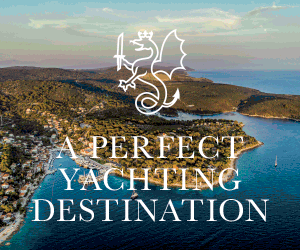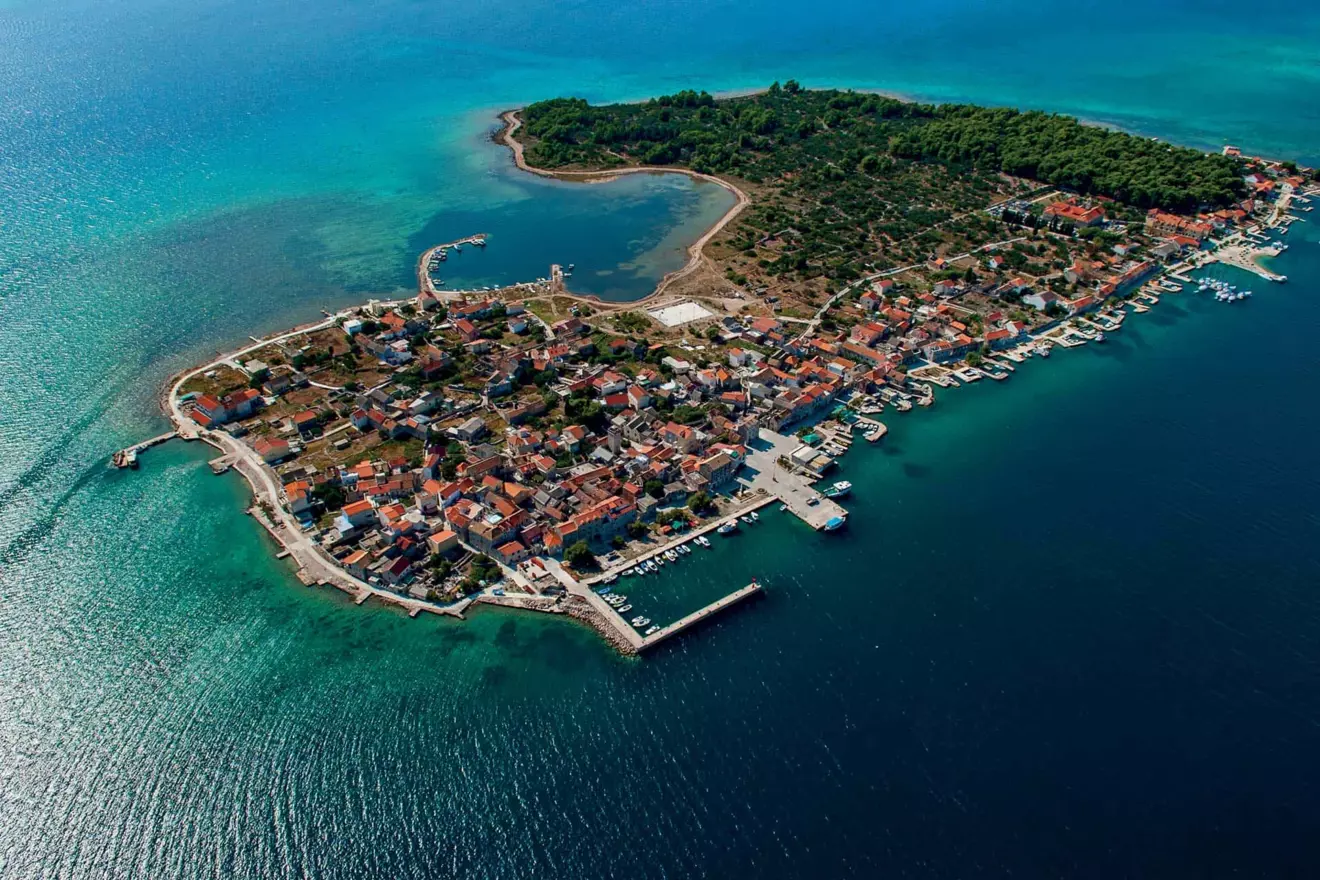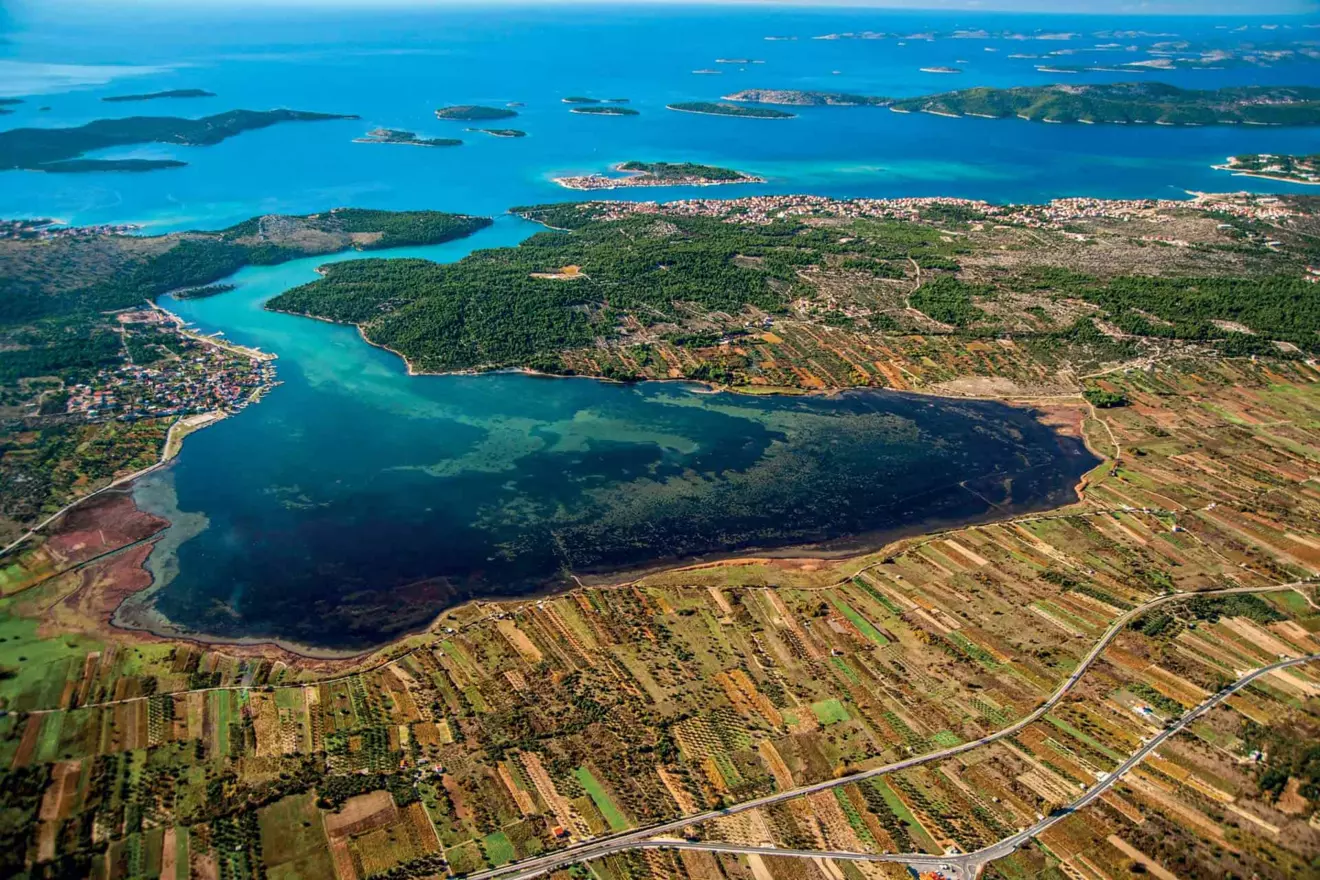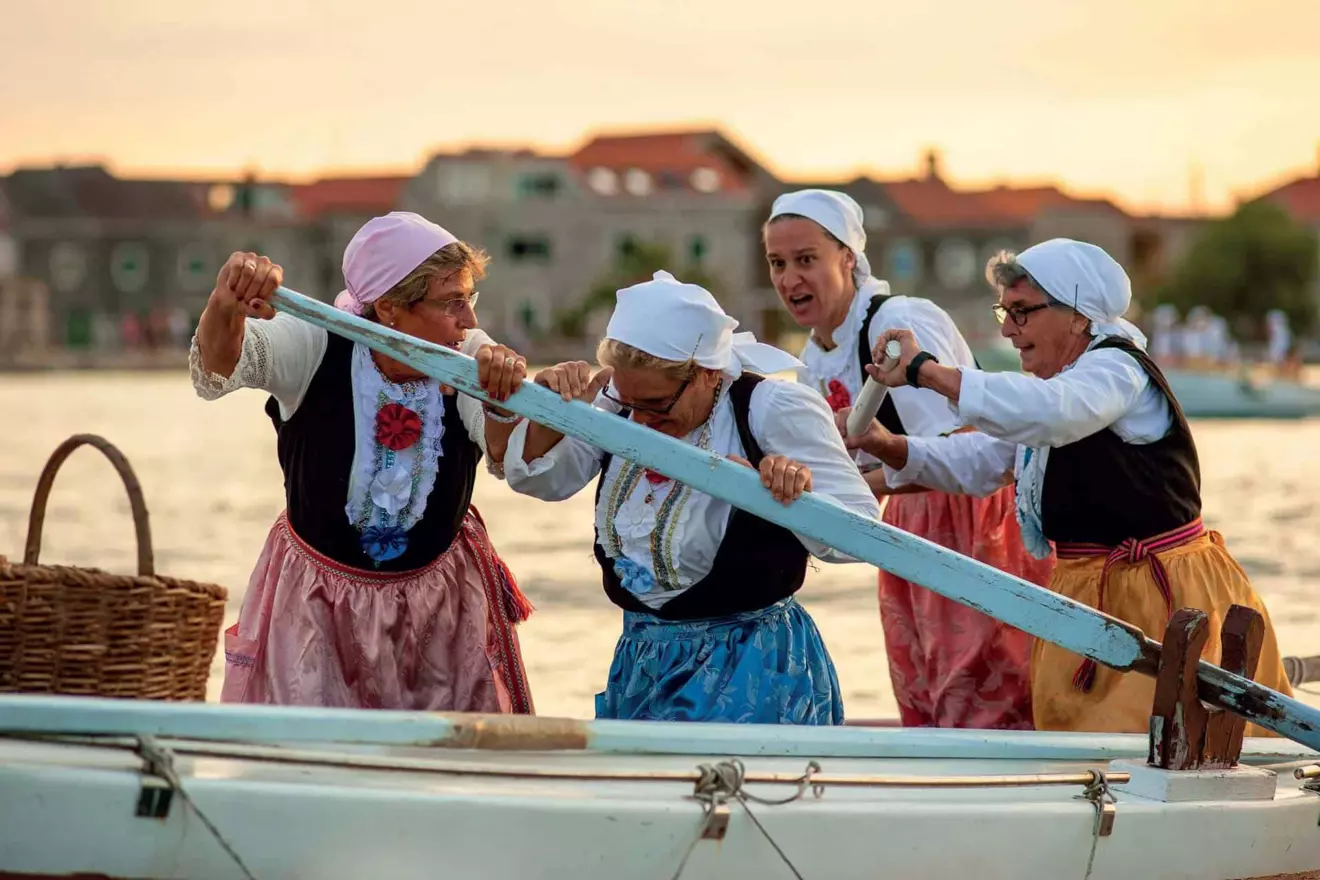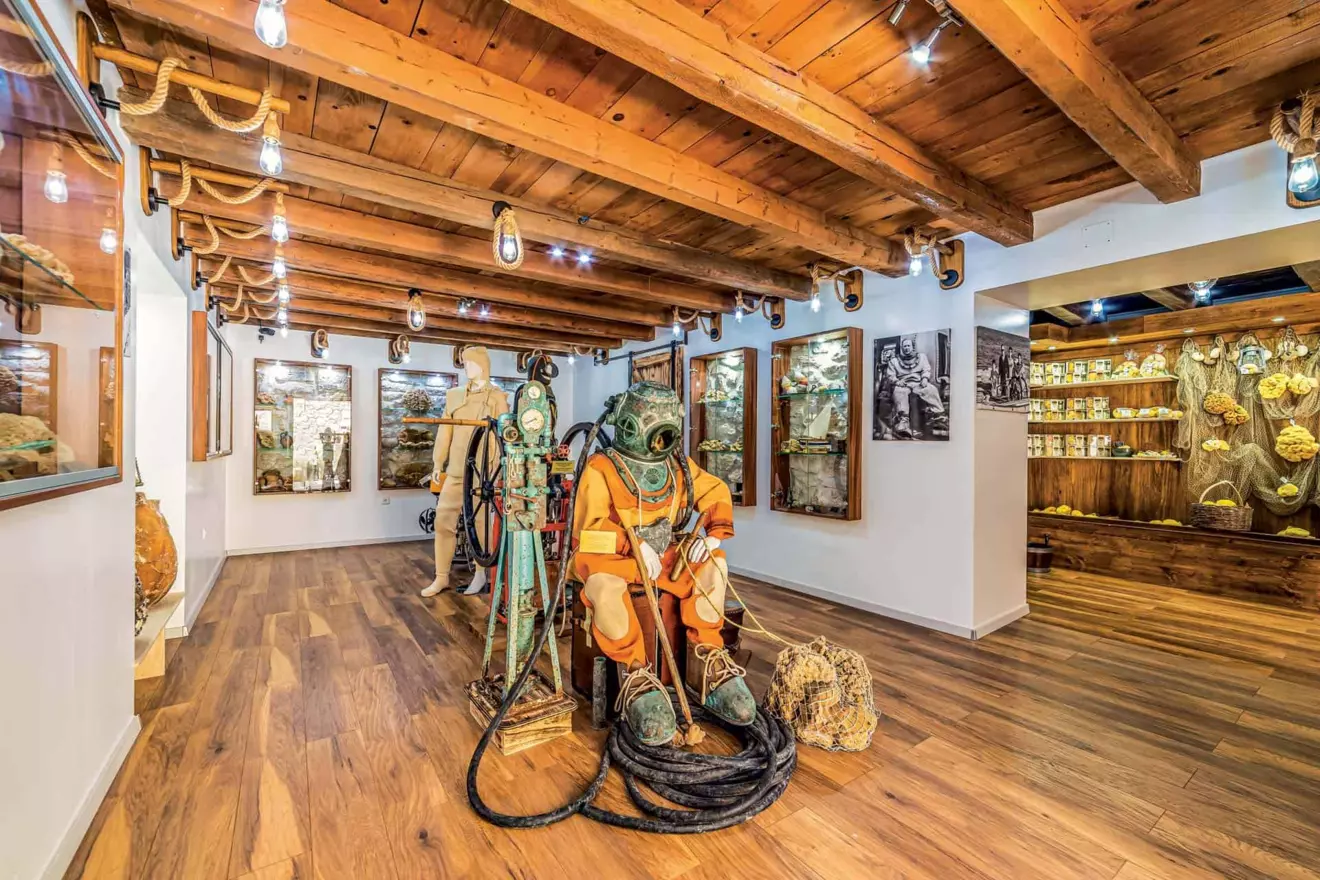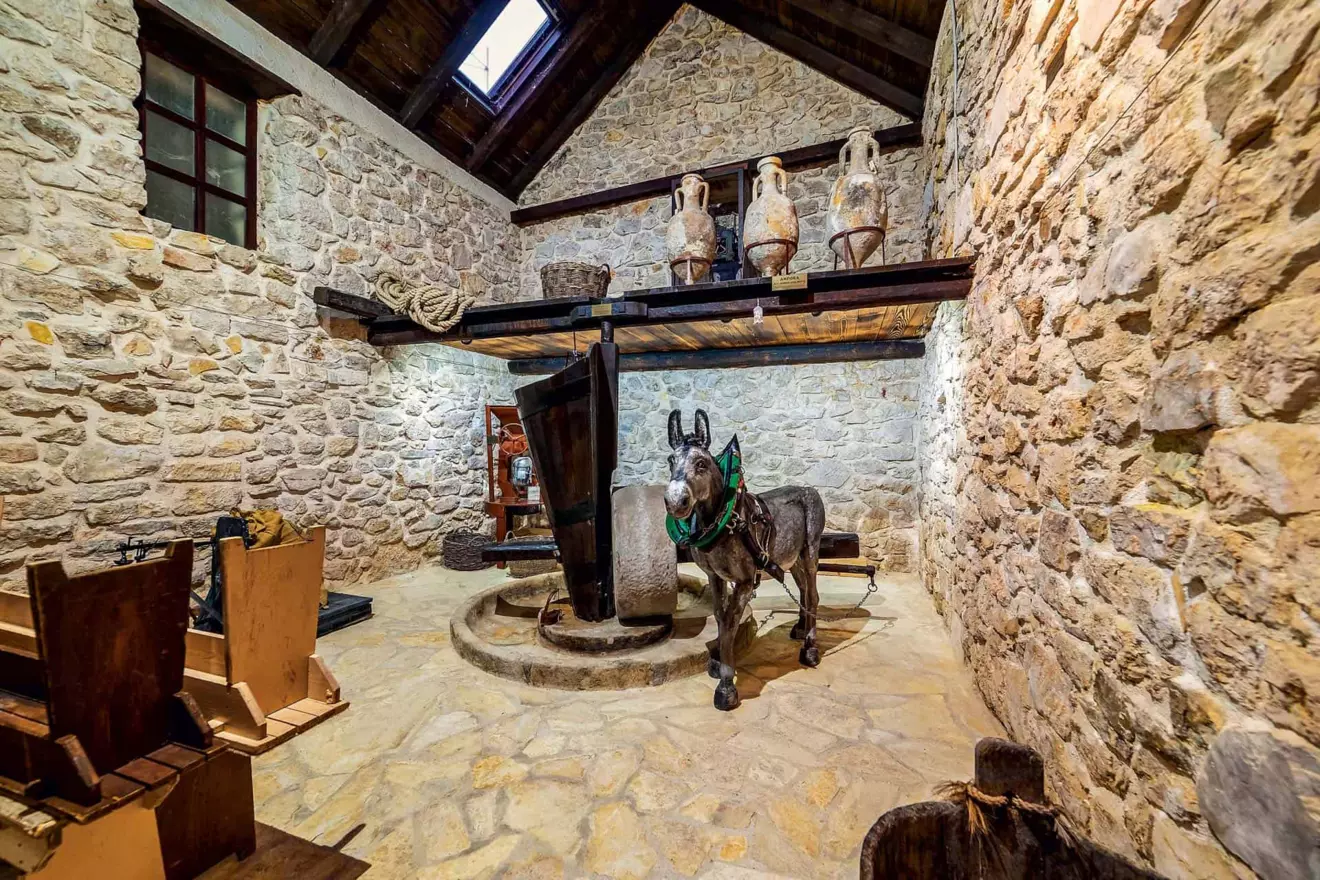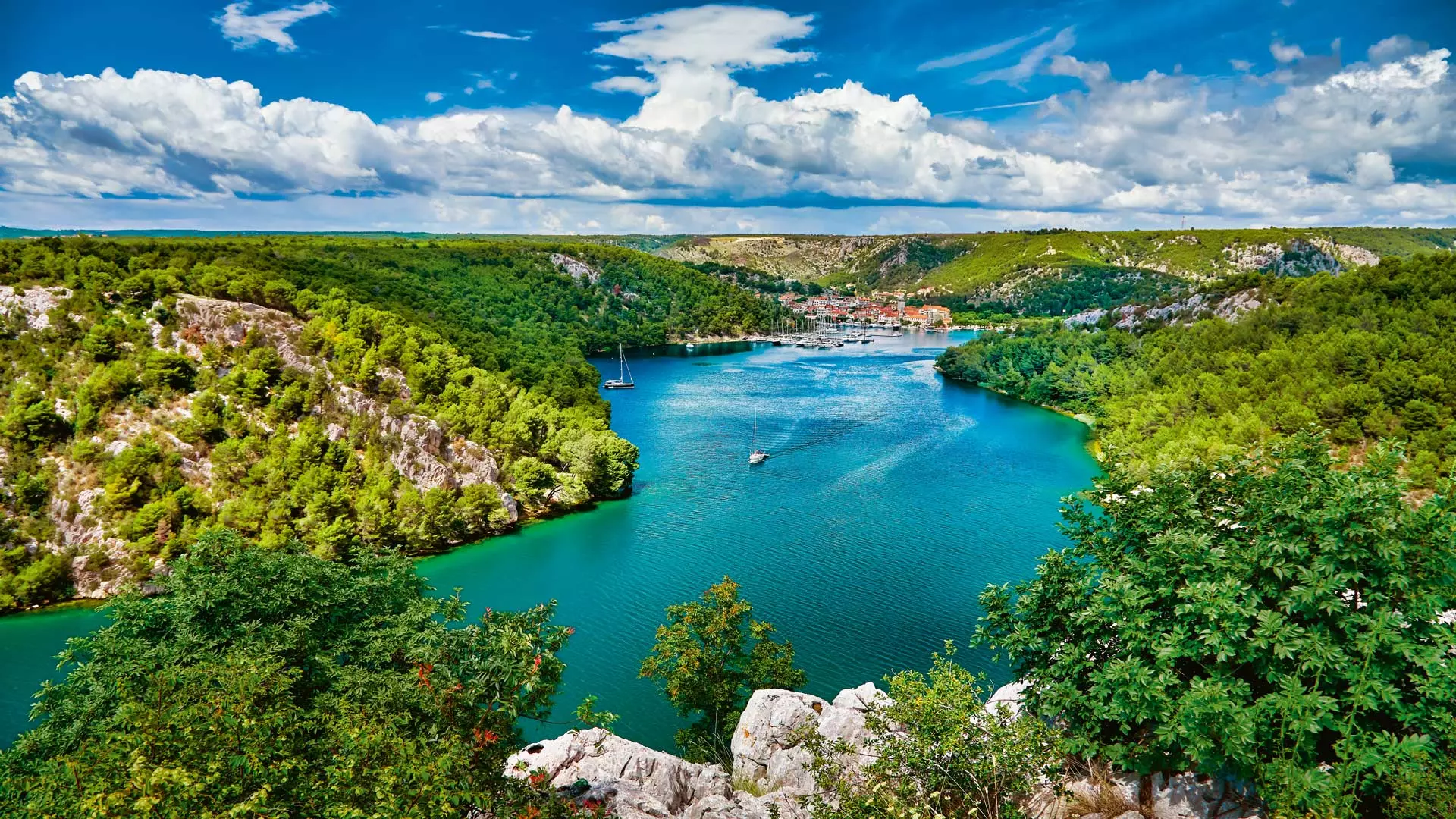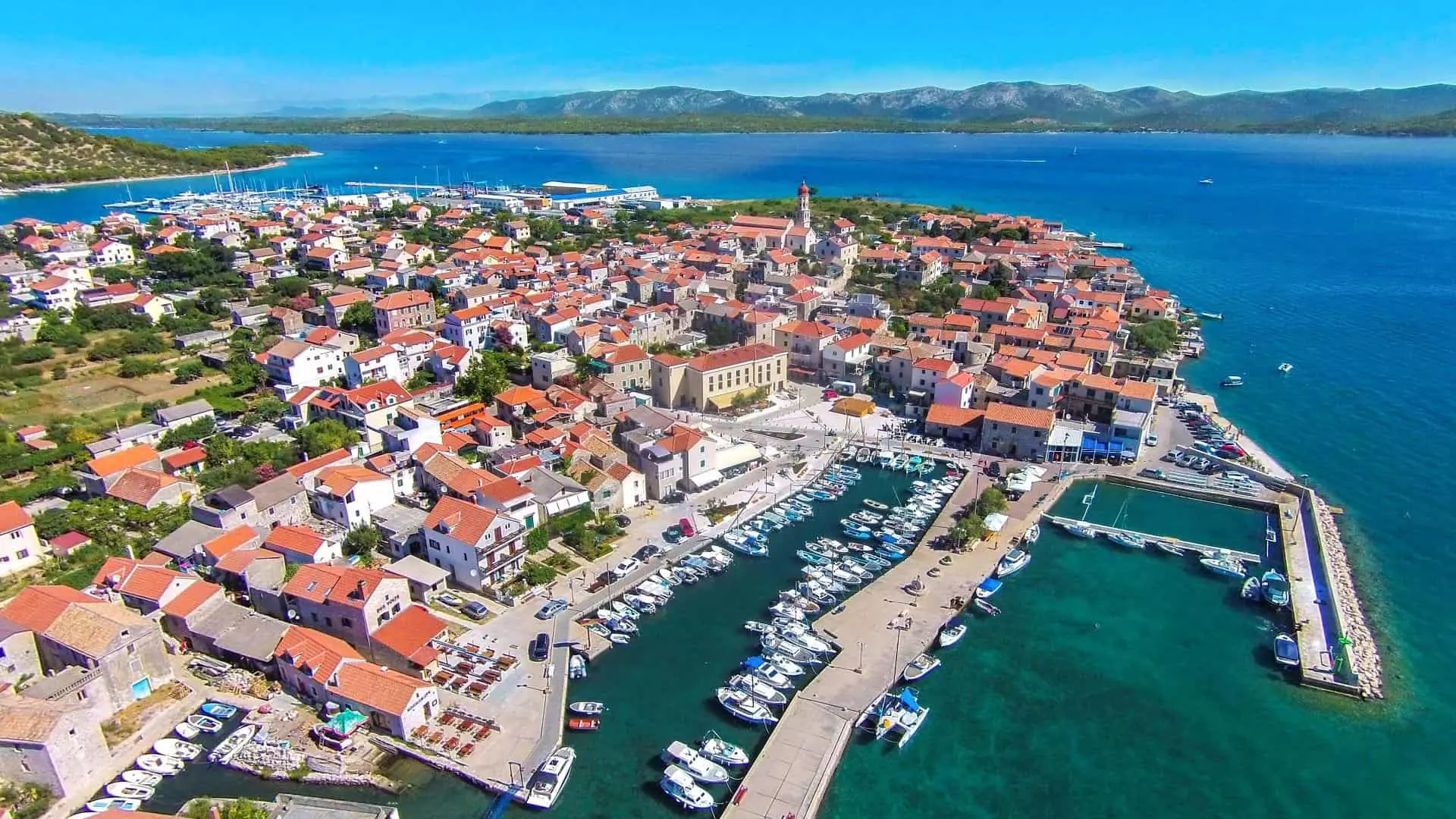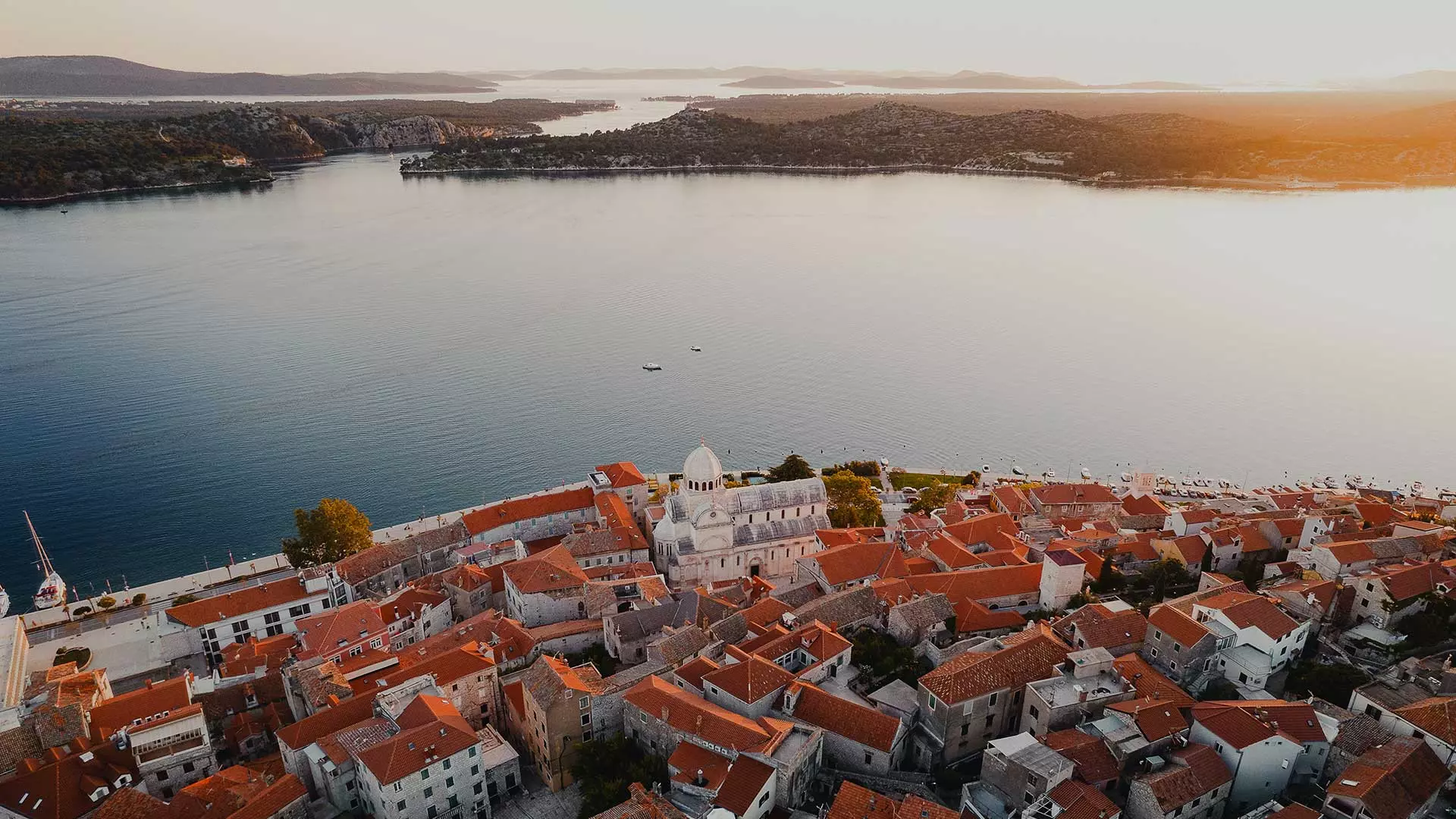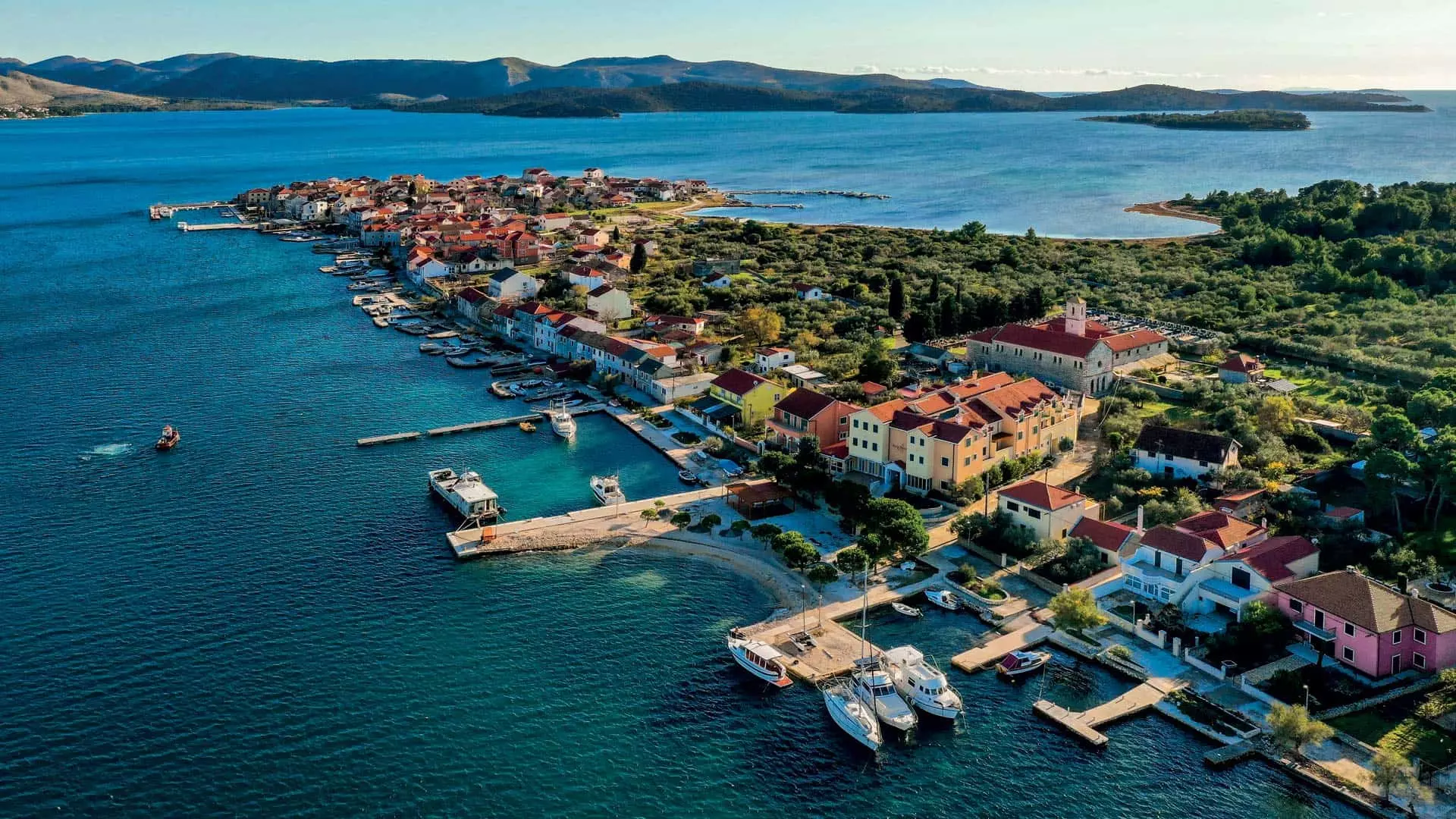
The Adriatic’s Tiniest Treasure: Dive into the History & Beauty of Krapanj
Tiny but mighty: Krapanj, the Adriatic's smallest inhabited island, boasts a rich history despite its diminutive size. In fact, the island barely rises above the waterline
Peeking at maps, you'll spot a tiny island south of Zlarin in Šibenik's embrace. Its northern coast is so flat, it appears sculpted from the mainland itself. This remarkably small landmass, separated at an unknown time, is Krapanj Island.
Unveiling the Enchanting Island of Krapanj
Though modest in size, Krapanj boasts a rich history. As Antonija Grubišić from the Krapanj Tourist Board says, it's a charming island offering a unique sense of tranquility, a 'zen' feeling as some describe it.
Despite being the Adriatic's tiniest and lowest-lying inhabited island, with an altitude barely exceeding a ship's keel (1.25 meters!), Krapanj packs a hidden punch. This little gem boasts a unique character you won't find anywhere else. Spend a delightful day exploring its shores and uncovering its secrets – Krapanj is sure to leave a lasting impression.
Combine Luxury Yachting with Krapanj's Charm
Krapanj's closeness to the mainland makes it easily accessible. You can even swim to its beaches from the charming town of Brodarica! If you're planning to explore the Šibenik archipelago by boat, consider starting your cruise from Krapanj. Marina Mandalina offers a convenient launching point to discover the beauty of the surrounding islands.
Forego the traditional anchorage and instead, glide your boat towards the private pier gracing the shores of Hotel Spongiola. This haven welcomes vessels up to 25 meters in length, offering a seamless transition from your nautical voyage to the island's sun-drenched shores. A mere stone's throw away lies a pristine beach, beckoning you to begin your Krapanj adventure.
Dive into Krapanj's Rich History & Sponge Diving Legacy
Despite its diminutive size, barely exceeding half a square kilometer, Krapanj boasts a legacy that stretches far beyond its shores. For three centuries, this Adriatic island and its people have been synonymous with the art of diving, earning it the prestigious title of the region's sponge-diving mecca.
Necessity, the mother of invention, steered the islanders towards the sea in the absence of fertile land and fresh water. This resourceful shift not only ensured their survival but also forged a unique connection with Greece, the cradle of sponge cultivation, adding another layer of rich history to Krapanj's alluring tapestry.
Cloaked in medieval mystery, Krapanj was once the private domain of a Šibenik nobleman. Uninhabited at the time, the island became a haven of serenity in the 15th century when Franciscan monks built a secluded monastery and church.
Fleeing the turmoil of the Ottoman incursions, mainland dwellers sought refuge on these tranquil shores, mirroring the modern-day escape from frenetic urban jungles. The island soon blossomed with charming stone houses, numbering around two hundred and forming the heart of the Krapanj settlement.
Intrigue replaced refuge. The Venetians, wary of Ottoman influence, expelled the Franciscans in 1700. In their wake, a new chapter unfolded. A charismatic priest, Father Antun, arrived from the distant shores of Crete, carrying with him the secrets of a most curious treasure - the art of diving for and processing sponges. Thus began Krapanj's unique legacy, a tale woven from the depths of the Adriatic.
For centuries, the inhabitants of Krapanj have held a unique dominion over the Adriatic depths. Initially, their bounty came from the gentle harvest of a remarkable sea creature – the sponge. These soft marvels, found nestled up to fifteen meters below the surface, were plucked from the ocean floor with simple tools aboard traditional vessels.
The arrival of the first diving apparatus in 1893, a marvel of Austro-Hungarian ingenuity, ushered in a new era. The air pump, a harbinger of modern technology, transformed the collection of sponges into a daring and lucrative pursuit. Krapanj families embarked on bold expeditions throughout the Mediterranean, their skills and courage leading them as far as the Libyan coast.
It was a time of hardship and adventure, a testament to the unwavering spirit of these remarkable islanders. Similar exploits were undertaken by their neighbors from Zlarin, who sought a different treasure – the precious coral reefs.
For centuries, a different kind of 'season' unfolded on Krapanj. Teams of up to eight hardy souls, not tourists, set sail in vessels powered solely by oar and sail. Their quest: not leisure, but the elusive bounty of the deep – sponges.
Unlike today's divers, clad in sleek, modern gear, these men descended into the inky abyss burdened by heavy suits, a testament to their extraordinary physical prowess and unwavering resolve. The depths they reached, a staggering 40 meters, demanded not only exceptional fitness but also an ironclad mental fortitude, for each dive was a battle against the crushing pressure and ever-diminishing air.
For generations, the Tanfara family has embodied the indomitable spirit of Krapanj. Since 1896, they have braved the perilous depths, their legacy preserved within the walls of the exquisite Spuga 2 museum. Here, amongst displays of historic diving suits and gleaming metal helmets, one can not only witness the tangible remnants of this bygone era, but also acquire a truly unique memento – a genuine Krapanj sponge, a prized treasure born from the very heart of the Adriatic.
Beyond the glistening Adriatic lies Žitak, a captivating gallery overflowing with the island's most coveted souvenirs: natural sponges, remnants of a time-honored Krapanj tradition. Nowhere else will you find these treasures so imbued with history and imbued with the very essence of the island.
Island Charm: Stone Houses & Picturesque Sights
Gallery of sponges - Žitak, is another wonderful place where you can find these truly autochthonous souvenirs, and nowhere are they as good and as steeped in tradition as in Krapanj. Even today, some of the stone houses that were created thanks to sponging are part of the beautiful view of this Škojic, and there are opportunities to take photos at almost every canton and under every volt, and on such a romantic walk along the way you will hide from the heat in the heather.
You will not miss the museum-oil mill of St. Lovre from the 15th century, where old stone presses evoke how olive oil was once made with the help of loads, while the Spongiola Hotel also houses a diving museum. For refreshments and some kind of gastronomic break, we will not name any restaurant individually, because you will see them all, so you can choose the one that suits you best in terms of atmosphere and view.
A Culinary Journey: Traditional Dishes & Local Specialties
That's why we will recommend the specialties - 'Krapanjski pijat' and orzoto, both prepared in the traditional way, because with so many divers on the island, of course there are also a lot of good fishermen and always fresh catch from the sea. 'Krapanjski pijat' is octopus prepared in stew with the addition of pasta, and every restaurant has its own little touch on that dish, so this fish stew will be a little different in every restaurant.
Another specialty is a version of black risotto, but instead of rice, orzo, or barley, is cooked and, of course, it pours in its glory, or blackness, and according to many gourmets, it is better than risotto.
You don't believe? Come to the island of Krapanj and see for yourself.
Text Filip Bubalo
Photos Ivo Pervan, Boris Kačan & TZ Krapanj Brodarica / Milena Tanfara


